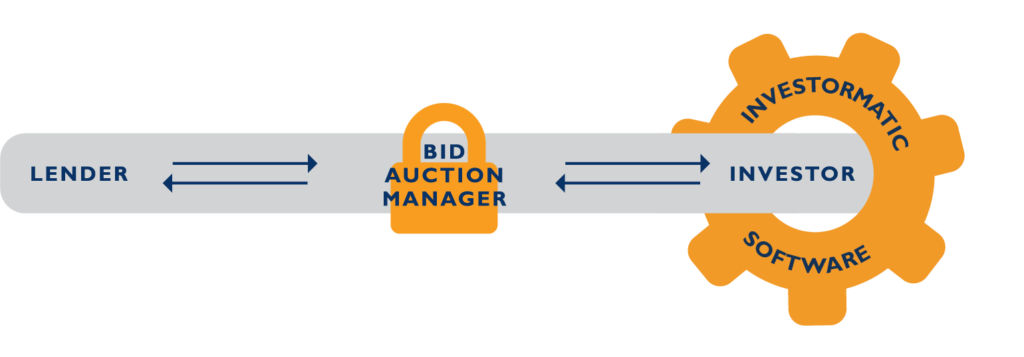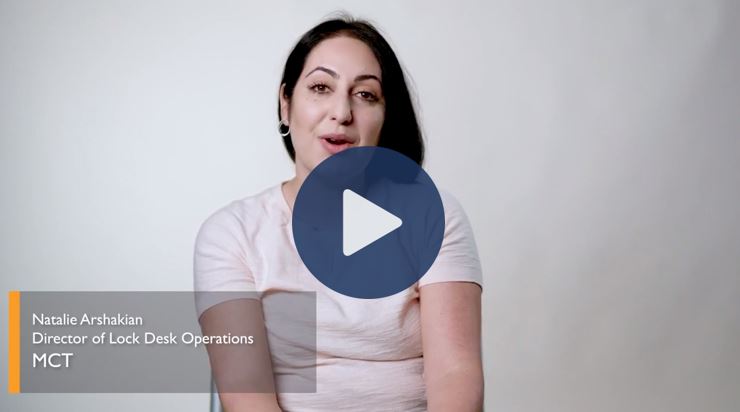 One often-overlooked way to easily pick up 12+ basis points, is through reviewing and optimizing your investor set.
One often-overlooked way to easily pick up 12+ basis points, is through reviewing and optimizing your investor set.
Reviewing and optimizing your investor set and pricing, will increase profitability by allowing your company to get the best price for a specific product you are selling, in the most efficient manner.
Most know what it means to get the best price, but don’t necessarily know how to go about it, or how to achieve it effectively and efficiently.
In this article, we will discuss how to quantify where to deliver your production, the process for auditing your investor base, and how to optimize your investor set.
Table of Contents
7 Considerations for Choosing the Right Investors
It would be nice to think selling a mortgage was as simple as maximizing its price, but it isn’t. In this section, we’ll discuss factors to consider when choosing the right investors to include in your set.
1. Best Price
Some companies do sell purely to the investor with the highest price. For lenders really leveraging technology, price is part of the equation, but what it really comes down to is comprehensive analytics to “trade away” from the highest bid and maximize profit when the dust settles. Hitting that cover bid comes down to quantifying operational efficiencies.
2. Product Guidelines
Separately, there are a lot of variables to consider when making selling decisions. There are product guidelines, because different investors have different overlays. You may originate an FHA loan with a 680 FICO at 102.000, but after you take out the LLPAs for a certain investor, it is now trading at 99.000 and you have to pay a point of that origination to your LO.
3. Operational Efficiencies (Such as Warehouse Line Turnover)
Some companies don’t want to do business with investors on certain products for reasons such as the time it takes to get a loan purchased.
For example, even if you are offered the highest price, it may take two weeks and you need to turn your warehouse line over, forcing you to sell to an investor who can purchase the loan in four days. Nine out of ten times, if you have a conventional loan with DU approval, it won’t take more than six days after funding for the loan to be purchased. FHA/VA have slightly more conditions, and the jumbo and non-QM space, with its now limited investor options, even more than that.
You Can Evaluate Investors with MCT’s InvestorMatic
The InvestorMatic Program has been established to help MCT lender clients evaluate correspondent investors. While technology can be a good indicator on the seller experience, other factors like customer service, product mix, and additional value-adds should be considered. MCT recommends investors based on the complete picture of these and other factors.
Don’t just take our recommendation, explore potential pickup with unapproved investors, and determine whether to start a conversation for yourself with the anonymized shadow bidding functionality.
4. Best in Times of Market Volatility
You also have to consider worst case scenarios to anticipate which investors will be best in times of market volatility. When servicing values fluctuate wildly, over time most aggregators pay a better price than Fannie, but Fannie takes only two days to buy the loan. When pipelines are stressed to the max, it can take some aggregators upward of two weeks. That warehouse bank dwell time, when your P&L is taking the hit of 30-day LIBOR plus a haircut each day a loan is on the line, hurts.
5. Quality Relationship
There are conditions that aren’t fully quantifiable as well. Relationships in this industry are vitally important. In addition to the satisfaction of doing business with counterparties you trust, respect, and like as people, a long-standing partnership can become strategic. If you develop a good relationship with a certain investor and they trust that your loans will be good quality, they may be able to give you exceptions when you are in need.
6. Transferability of Documentation
Another consideration is the transferability of documentation. For example, if a deal falls through with one investor and you want to transfer the loan to a different buyer, the new investor may not accept the appraisal. Some investors may encourage you to do Assignment of Trade (AOT) on the execution, and some might not have the operational capacity to do it.
7. Miscellaneous / Seller Preferences
Think about your own preferences. Some lenders like to get a weighted average price for a complete package of loans while others slice and dice packages. It adds stress to your post-closing department to send 25 loan packages to 25 different investors rather than larger chunks to less investors, but you may have to take a lower price.
Different Tiers and Types of Correspondents
Let’s discuss the different tiers and types of investors. Fannie, Freddie, and Ginnie aside, the best place to start is with “the big boys”:
- “Big Boys” – Wells Fargo, JPMorgan Chase, AmeriHome, and PennyMac
- These companies do massive correspondent volumes every month and dictate pricing and product demand in their markets.
- They view servicing differently than some of the smaller players and the banks will buy loans in order to gain the relationship with the customer. As a lender, you may be able to get better pricing if you are selling delegated, as you are assuming the responsibility for the covenants like verification of employment and income, paying for the underwriting, and assuming the liability in the event something goes wrong with the loan.
- “Medium Tier” – TMS, Franklin American, Guild, and Freedom Mortgage
- The next tier down are still massive players in the correspondent game.
- These companies are specific in what they are looking to purchase because they cannot, or do not want to compete with a major bank like Wells Fargo for business.
- “Niche Tier” – Smaller, Niche investors
- These companies help the marketplace because as a lender, you don’t want to be dependent on accepting whatever price the larger aggregators will give you for a loan.
- Additionally, these investors offer takeouts for complex offerings of products like hobby farms or doctor programs. Investors in the larger tiers may not buy FHA loans from certain states, or may worsen their prices on products in which you have historically sold them a large volume.
Questions to Ask When Exploring New Programs and Investors
The objective of capital markets departments is to have the most competitive set of investors for the mix of loans in their pipeline. Each investor has a different process for the valuation of your loans and may be willing to offer more for loans that fit well into their strategy or portfolio.
Regularly reviewing your investors and programs can lead to a big pickup in execution.
Use the checklist questions below to explore new programs and investors.
Questions to ask yourself before adding new programs:Adding New Programs
Adding New Investors
Questions to ask yourself before adding new investors:
- What investors don’t you have and what do they offer?
- What can meetings with investors whom you have not yet worked tell you about the marketplace and pricing?
- Upon what products and specifications of loans may investors be focused?
- How does your organization handle product development? Do requests come from senior management, or do they come from sales staff trying to compete?
- What kind of reporting does a potential new investor provide, and how is communication handled?
- An investor doesn’t want thousands of individuals LOs calling up asking about individual files, so a point person must be designated.
The other half of scoping out new investors is making yourself appealing to an investor so they will be excited to collaborate. This knowledge must be relayed to the production staff. The transfer of information about products and investors is often the lifeblood for a lender.
What Do Investors Look for in a Quality Seller?
Let’s discuss how to look good in the eyes of correspondent lenders, whether it be obtaining their approval or keeping them interested in your production. Once you decide on an investor you would like to add, the biggest determinant of whether an investor will approve you, is net worth, as seen through your financials.
First and foremost, investors want to know how much cash is on hand when they are vetting sellers. The higher net worth, the more attractive you are as a lender, and many investors have net worth requirements to gain and keep approval.
The higher net worth you have as a lender, the higher echelon of investor you will be able to sell to, which means the best pricing. Additionally, having a high net worth means you will more easily be able to handle the shock of a bad loan leading to a potential buyback.
Other important aspects investors consider for a lender are:
• the mortgage industry experience levels of your senior leadership.
• the reputation of your sales staff.
• how loans are originated.
• what are the underwriting criteria.
• how well-thought-out are your policies and procedures.
• whether you have Fannie / Freddie / or GNMA tickets.
• whether you have lean loan packages that meet underwriting guidelines and that don’t go delinquent.
For a lender to obtain “Tier 1 pricing,” especially when committing best efforts, a lot of volume must be committed. For small originators, there are limited options in correspondent investors. Small lenders probably don’t have co-issue MSRs and aren’t retaining servicing, so selling loans becomes a relationship builder, either to obtain better pricing down the road, or to create efficiency with purchase clearing department.
What Product Do Investors Want?
Every investor wants the product they want. What product might you ask? The product that fits well into their portfolio. This is why adding new investors is often “product-driven”.
The value for many companies is in the servicing asset, and for others it is in the ability to quickly refinance that borrower, so in this market of highly commoditized products, knowing the goals of your investor counterparties is almost as important as knowing your own.
Some investors will pay premiums for high note rates and good FICO scores, knowing that borrower and their loan profile presents an instant refinance opportunity. Other investors don’t want the runoff from their servicing portfolio that comes with a refinance, and will seek loans with long expected durations, giving you some of the value from that servicing strip up front because they believe they will be collecting monthly interest and principal payments for a long time.
Other investors may be looking for borrowers they can form a lifetime relationship with, in order to sell that customer other financial products. And some investors are looking for vanilla production they can easily securitize into an asset, retain the servicing, slap on their private label and sell to a broker-dealer.
Regardless of the preference, investors are willing to create a market for the type of loans they want in their portfolio.
How to Optimize your Investor Set
Now that we’ve reviewed all the considerations with adding new investors, we can finally detail the best strategy for optimizing your investor set. The key is providing top of the line analytics on your business.
Investors have a scorecard for you, so the best way to make your case is to make a scorecard for them. Take that information they provided you and quantify the cost of doing business at the end of the day.
Providing Strong Analytics to Your Potential New Investors
Even if you received the best price upfront, the time it took for the loan to be purchased and all the conditions you had to fill on the back end likely lowered your all-in profit.
- Deduct the cost of each day that loan sat on your warehouse line and the cost of re-underwriting the loan – any expense that arose before the file was settled.
- Capital markets staff should be able to quantify the advantages, or disadvantages, of doing business with each investor.
- Track the time it takes from commitment to shipping to receiving the first condition, then how long it takes to fill that condition or all conditions on an individual loan, then measure how long it takes until the loan is actually purchased.
Lenders should use these analytics as part of managing their relationships with investors. If you can provide an investor with information on how to win more of your business, chances are they will be interested.
Lastly, we’ll review some speed bumps you can expect when optimizing your investor set by adding new investors.
Challenges of Adding New Investors
As a lender, you are only doing yourself a disservice if you don’t have multiple takeouts for every loan, as issues can always arise (such as an invalid appraisal or something missing from the closing package) that may make a loan ineligible for purchase. And do you really want to be dependent on one conventional price an investor is offering you? No.
This brings us to the inherent struggle for lenders between their sales staffs and secondary marketing departments.
- Loan officers and AEs at every company would like the largest suite of products to be able to sell prospective clients on. They aren’t concerned about the takeout on the back end, so long as they get paid.
- For secondary staffs, adding new investors and maintaining existing relationships takes time and costs money.
Operational Considerations for Adding New Investors
The following are detail some operational speed bumps you will encounter when adding new investors. Be advised that the added pickup is certainly worth the trouble.
- More Work at the Beginning: After a lender is approved with an investor, the first 25-50 files are going to be picked apart, and you can find yourself doing a lot of extra work for that additional pickup you thought you were going to realize.
- New Policies and Procedures: your post-closing department probably has a rhythm with their counterparts that work for already-approved investors, and adding new policies and procedures for each new investor is going to slow down their work.
- New Underwriting Guidelines: Each new investor has their own underwriting guidelines, and most likely a preference of delegated or non-delegated underwriting. There are purchase-clearing and post-closing conditions to navigate. You have to clear the conditions that a correspondent put on a prefunding review.
- Quarterly Reporting: Additionally, you are going to be required to provide quarterly reporting to the investor based on required metrics.
- This quarterly reporting is going to comprise the investor scorecard. The scorecard is for a certain period of time, and the investor will look at loans you sold, providing a complete breakdown. Here are the delinquencies, the weighted average FICO, and so on – all info on the loans you sold them and their performance. This scorecard will include how long it took the investor to buy them, the number of trailing docs you had to provide they didn’t provide first time, the number of buybacks, etc.
Optimize Your Profits with Industry-Leading Investor Analytics
As mentioned above, making selling decisions isn’t as simple as price.
There are many variables, both quantifiable and unquantifiable that should factor into your selling decisions.
Lenders know that they can always be doing better a better job of increasing profits, and expanding your investor set is a great place to start.
Learn how you can receive top-level investor recommendations by exploring the benefits of MCT’s InvestorMatic program. To learn more about profit increasing strategies, contact us today for industry-leading guidance and analytics.
Related articles to strengthen your knowledge base:




